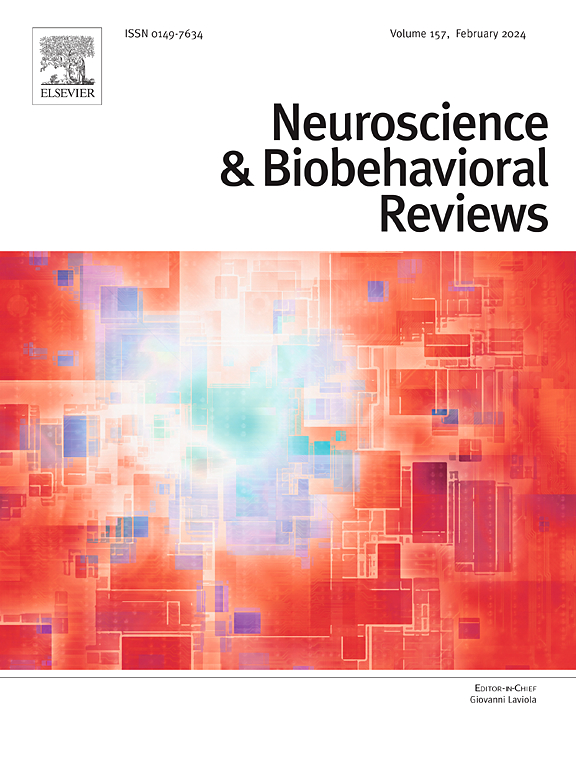Neural foundations of creativity: A voxel-based meta-analysis of the activations and deactivations underlying creativity across linguistic, musical, and visual domains
IF 7.9
1区 医学
Q1 BEHAVIORAL SCIENCES
引用次数: 0
Abstract
The neuroscience of creativity has proposed that shared and domain-specific brain mechanisms underlie creative thinking. However, greater nuance is needed in characterizing these mechanisms, and limited neuroimaging analyses, especially regarding the relationship between the Alternative Uses Task (AUT) and other linguistic tasks, have so far prevented a comprehensive understanding of the neural basis of creativity. This paper offers to fill these gaps with a closer examination of the contributions of the specific domains and the deactivations associated with creativity. We conduct a voxel-based meta-analysis of 43 neuroimaging studies involving 1118 participants. Using Seed-Based d Mapping, we investigate the spatial activity maps in the brain associated with overall creativity and with specific domains. Our findings reveal various domain-general mechanisms related to creativity, including working memory, the ability to connect distantly related concepts, the inhibition of conventional thought, interoception, internal goal orientation, mind wandering, and mental motor simulations. We also identify domain-specific mechanisms of creativity that differ by modality. Linguistic creativity requires inhibiting typical semantic associations, musical creativity involves auditory-motor integration and spontaneous expression, and visual creativity depends on inhibiting habitual visuospatial associations. Additionally, AUT is more effective at capturing novel tool manipulation and ideation rather than elaborative creative processes, which limits its scope. This meta-analysis underscores that creativity depends on multi-component neural circuits and highlights the need for future research to report deactivations, investigate neurofeedback applications, and analyze long-term and collaborative creative processes.
创造力的神经基础:跨语言、音乐和视觉领域的创造力激活和失活的基于体素的元分析。
创造力的神经科学提出,共享和特定领域的大脑机制是创造性思维的基础。然而,表征这些机制需要更大的细微差别,有限的神经影像学分析,特别是关于替代用途任务(AUT)和其他语言任务之间的关系,迄今为止阻碍了对创造力的神经基础的全面理解。本文通过对特定领域的贡献和与创造力相关的失活的更仔细的研究来填补这些空白。我们对涉及1118名参与者的43项神经影像学研究进行了基于体素的荟萃分析。使用基于种子的映射,我们研究了大脑中与整体创造力和特定领域相关的空间活动图。我们的研究结果揭示了与创造力相关的各种领域一般机制,包括工作记忆、连接远相关概念的能力、传统思维的抑制、内感受、内部目标定向、走神和心理运动模拟。我们还确定了不同形态的特定领域的创造力机制。语言创造力需要抑制典型的语义关联,音乐创造力涉及听觉-运动整合和自发表达,而视觉创造力依赖于抑制习惯性的视觉空间关联。此外,AUT在捕捉新颖的工具操作和创意方面更有效,而不是精细的创意过程,这限制了它的范围。这项荟萃分析强调了创造力依赖于多组分神经回路,并强调了未来研究报告失活、调查神经反馈应用以及分析长期和协作创造过程的必要性。
本文章由计算机程序翻译,如有差异,请以英文原文为准。
求助全文
约1分钟内获得全文
求助全文
来源期刊
CiteScore
14.20
自引率
3.70%
发文量
466
审稿时长
6 months
期刊介绍:
The official journal of the International Behavioral Neuroscience Society publishes original and significant review articles that explore the intersection between neuroscience and the study of psychological processes and behavior. The journal also welcomes articles that primarily focus on psychological processes and behavior, as long as they have relevance to one or more areas of neuroscience.

 求助内容:
求助内容: 应助结果提醒方式:
应助结果提醒方式:


